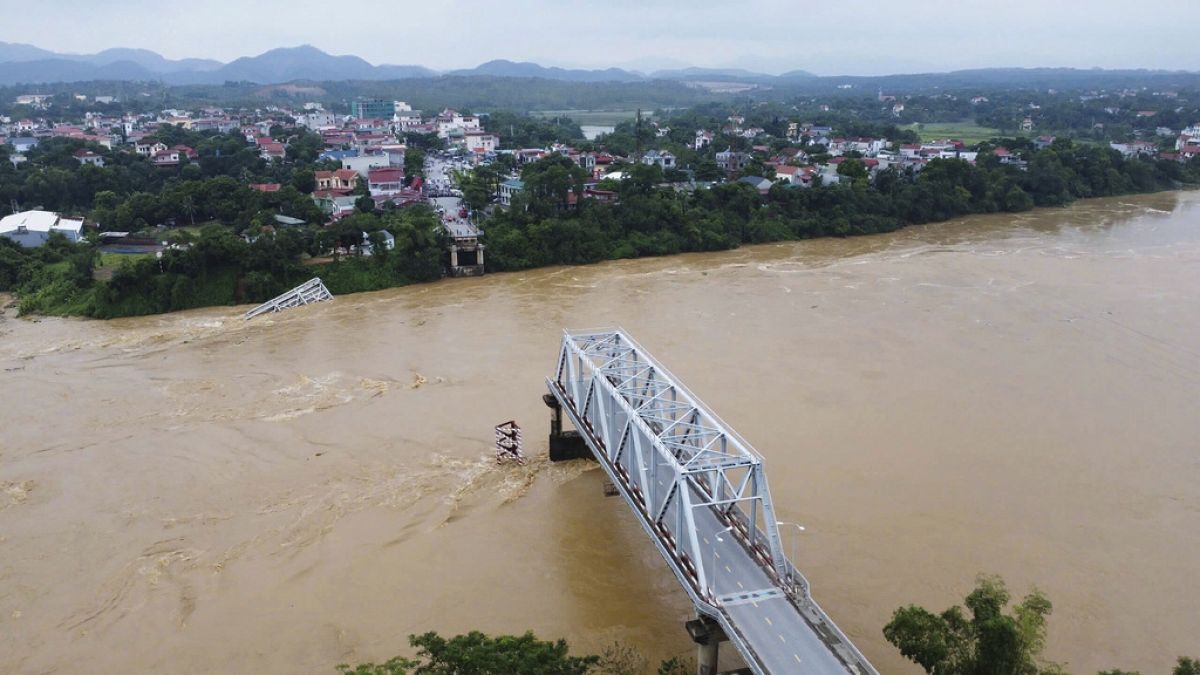Yagi, the strongest typhoon to hit Vietnam in decades, made landfall on Saturday with winds reaching up to 149 kilometers per hour. The impact of the typhoon was devastating, with at least 59 deaths reported in the Southeast Asian country due to the storm and consequent floods and landslides. The water levels in northern Vietnam rose dangerously, causing a bridge collapse and a bus to be swept away by flooding.
In the aftermath of the typhoon, nine people lost their lives while 50 others died in floods and landslides. Rescue efforts were hindered by landslides blocking access to the affected areas. In Cao Bang province, a passenger bus was swept into a flooded stream by a landslide, leading to casualties. Similarly, in Phu Tho province, a steel bridge over the Red River collapsed, causing 10 vehicles to fall into the river.
Despite weakening to a tropical depression, the Vietnamese meteorological agency issued warnings about possible floods and landslides due to continuing downpours. The aftermath of the storm was grim, with reports of landslides claiming lives in Sa Pa town. In Hanoi, workers scrambled to clear the debris left by the typhoon, with heavy rain continuing in northwest Vietnam.
The agricultural sector in Vietnam suffered significant damage, with nearly 116,192 hectares of land affected by Typhoon Yagi. Industrial hubs like Quang Ninh and Haiphong provinces experienced power outages, affecting millions of residents. The storm also impacted factories, including those of EV maker VinFast and Apple suppliers Pegatrong and USI, with reports of inundation and structural damage.
Prime Minister Pham Minh Chinh visited Haiphong city to assess the damage and approved a recovery package of $4.62 million to help the city rebuild. The impact of Typhoon Yagi was not limited to Vietnam, as it caused fatalities in the Philippines and China prior to landfall. Benjamin Horton, director of the Earth Observatory of Singapore, highlighted that storms like Typhoon Yagi are becoming stronger due to climate change, as warmer ocean waters provide more energy for storms, leading to increased wind speeds and rainfall.











